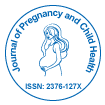Nuestro grupo organiza más de 3000 Series de conferencias Eventos cada año en EE. UU., Europa y América. Asia con el apoyo de 1.000 sociedades científicas más y publica más de 700 Acceso abierto Revistas que contienen más de 50.000 personalidades eminentes, científicos de renombre como miembros del consejo editorial.
Revistas de acceso abierto que ganan más lectores y citas
700 revistas y 15 000 000 de lectores Cada revista obtiene más de 25 000 lectores
Indexado en
- Índice Copérnico
- Google Académico
- Claves Académicas
- Búsqueda de referencia
- Universidad Hamdard
- EBSCO AZ
- OCLC-WorldCat
- publones
- Fundación de Ginebra para la educación y la investigación médicas
- Pub Europeo
- ICMJE
Enlaces útiles
Revistas de acceso abierto
Comparte esta página
Abstracto
Prevalence and Factors Influences Utilization of Modern Contraceptive Methods among Married Women of Reproductive Age Group (15-49 Years) in Holeta Town, Oromia, Ethiopia 2016
Teka Girma*, Abdurahman Sultan and Kebede Legese
Background: Family planning refers to the use of various methods of fertility control that will help individual men and women or couples to have the number of children they want and when they want them in order to assure the wellbeing of the children and the parents. Rapid population growth is of the prominent challenge of our planet. This major challenge is not equally shouldered by each nation. Developing countries are still suffering from the wave of unchecked population growth. The aim of this study was to assess the prevalence and factors influencing utilization of modern contraceptive method among married women of reproductive age group in Holeta town, 2016. A Crosssectional community based study design was conducted to assess the prevalence and factors influencing utilization of modern contraceptive methods among married women of reproductive age group (15-49 year) in Holeta town from May 10 to 28, 2016. The participants were selected by systematic random sampling technique and data was collected from 295 married women of reproductive age group by interviewer administered questionnaires were employed. Binary logistic regression models were used to assess associations between factors and Modern Contraceptive method use. Results: Modern contraceptive prevalence rate among married women was 218 (73.9%). Inject able contraceptives were the most frequently used methods143 (65.6%), followed by implant 45 (20.6%), pills 16 (7.3%), IUD (5.0%) and condom 2 (0.9%). Multinomial logistic regression model revealed that age (AOR 2.389, 95%CI 1.113-1.733 p-0.004), occupation (AOR1.555, 95% CI 1.234-1.96 p-0.000), culture (AOR 2.441, 95% CI 1.064-5.602 p-0.o35), religious father (AOR 0.013, 95% CI 1.048-3.865 p-0.036), and stillbirth (AOR 0.363, 95% CI 0.133-0.993 p-0.049) were significantly associated with the use of modern contraceptives methods. Conclusion: The overall utilization of modern contraceptives in this study was 218 (73.9%). The most common modern contraceptive method used was injectable 143 (48.5%). The finding of this study highlighted that women’s occupation, age, culture, religious fathers and number of desired male children were important factors that influenced the use of modern contraceptive methods. Among these the most significant factors influencing utilization of modern contraceptive was women’s occupation. Recommendation: Policy makers and implementers should work on those factors to increase the utilization of modern contraceptive methods. Since static family planning services are not accessible to change the community’s culture, other strategies like outreach methods should be considered. Further study is required to explain perceptions and barriers towards modern contraceptive use among the religious father.
Revistas por tema
- Agricultura y acuicultura
- Alimentación y Nutrición
- Bioinformática y biología de sistemas
- Bioquímica
- Ciencia de los Materiales
- Ciencia general
- Ciencias Ambientales
- Ciencias Clínicas
- Ciencias farmacéuticas
- Ciencias Médicas
- Ciencias Sociales y Políticas
- Ciencias Veterinarias
- Enfermería y atención sanitaria
- Física
- Genética y biología molecular
- Geología y Ciencias de la Tierra
- Ingeniería
- Inmunología y Microbiología
- Química
Revistas clínicas y médicas
- Anestesiología
- Biología Molecular
- Cardiología
- Cirugía
- Cuidado de la salud
- Dermatología
- Diabetes y Endocrinología
- Enfermedades infecciosas
- Enfermería
- Gastroenterología
- Genética
- Inmunología
- Investigación clínica
- Medicamento
- Microbiología
- Neurología
- Odontología
- Oftalmología
- Oncología
- Pediatría
- Toxicología

 English
English  Chinese
Chinese  Russian
Russian  German
German  French
French  Japanese
Japanese  Portuguese
Portuguese  Hindi
Hindi